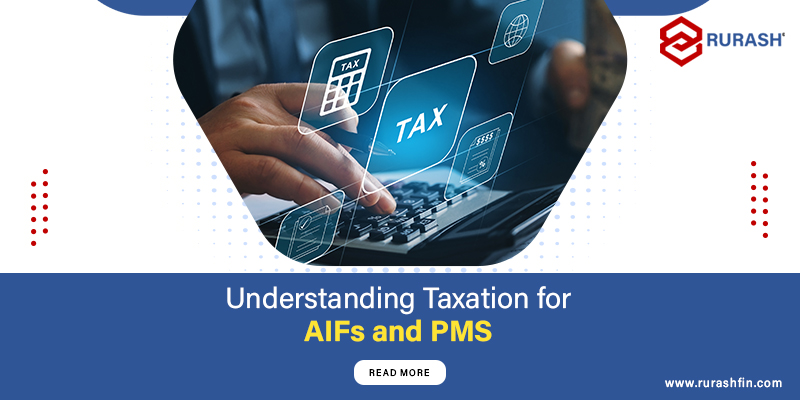A decade ago, the investment landscape in India looked vastly different. Mutual Funds and fixed deposits were the go-to choices for retail investors, while High Net Worth individuals (HNIs) leaned towards Portfolio Management Services (PMS) to manage their wealth. Recognizing the need for a regulatory framework, the Securities and Exchange Board of India (SEBI) introduced the SEBI (Alternative Investment Funds) Regulations, 2012 (AIF Regulations) to bring structure to the market of pooling investments in India.
Let’s delve into the tax implications for investors in AIFs and PMS, unraveling the complexities and shedding light on the differences.
Understanding the AIF Categories:
AIFs are categorised into three groups: Category I, Category II, and Category III.
- Category I funds invest in start-ups or early-stage ventures,
- Category II deals with non-leverage funds like those investing in debt,
- Category III employs diverse or complex trading strategies.
Tax Implications Across AIF Categories:
The taxation landscape for AIF investors hinges on two key factors— the fund’s category and its legal structure.
- Category I and II funds enjoy a ‘pass through’ status, implying that gains or losses are taxed in the hands of investors, not the fund. However, business income is an exception.
- Category III, on the other hand, lacks pass-through status, resulting in taxation at the fund level.
Diving deeper into tax implications, Category III AIFs face taxation at the fund level for various income types, including business income, short-term and long-term capital gains, and dividend income. The differing tax rates for these incomes necessitate a thorough comparison among the three AIF categories.
Maximum Marginal Rate (MMR):
MMR, the highest income tax slab rate for individuals, varies based on income. Understanding MMR is crucial for AIF investors, particularly those in Category III, as it impacts the taxation of business income, short-term capital gains, long-term capital gains, and dividend income.
Contrasting AIFs with Portfolio Management Services (PMS):
PMS, a customised investment service, offers a tax-friendly alternative to AIFs. In PMS, investors own securities individually and pay taxes at their applicable income tax slab rates. The ‘pass-through’ status, similar to Category I and II AIFs, simplifies the taxation process for PMS. However, any tax-unfriendly activities by the PMS fund draw scrutiny from the investor, not the fund itself.
Navigating GST in AIF and PMS:
Goods and Services Tax (GST) adds another layer of complexity. GST is levied on management services provided to foreign investors through a domestically pooled AIF managed by a fund manager, regardless of residency. However, if PMS is directly provided to foreign investors, GST is not applicable. This creates a disparity that needs addressing, especially regarding the GST on management fees charged by the AIF manager to the AIF, particularly for foreign investments.
Organisational Snafus and Tax Implications:
AIF investors face complexities in choosing the organisational structure. For instance, structuring a CAT III AIF as a company hamper returning money to investors due to taxation on dividends. LLPs offer a 35% tax rate but require amendments for new investors. Trusts face high taxation on business income but provide flexibility in adding new investors. PMS, however, maintains straightforward taxation regardless of legal structure.
Addressing Disparities and Solutions:
There’s a case for removing the GST disparity on management fees for AIFs, especially concerning foreign investments. Input tax credit eligibility for GST on management fees further tilts the scale in favour of PMS entities over AIFs. Setting up AIFs in the GIFT City could offer solutions, but this route is primarily feasible for non-resident investors.
As AIFs become a preferred investment vehicle in India, understanding the tax implications is paramount. Category I and II AIFs offer a pass-through advantage, while Category III faces distinct tax challenges. PMS, with its simplicity and tax-friendly approach, stands out as a viable alternative. The call for a simplified tax structure echoes the need for transparency and ease for investors. In the dynamic landscape of investments, being well-versed in the taxation nuances of AIFs and PMS is key to making informed decisions and maximising returns.
Discover wealth creation beyond boundaries with Rurash Financials! AIFs, tailored for high-net-worth individuals and corporations, offer diverse investment avenues. Explore our curated options across asset classes—Private Equity, Real Estate, Hedge Funds, and more—for high-yield returns and legacy building. Backed by our in-house research, we aim for superior returns while managing risks effectively.

